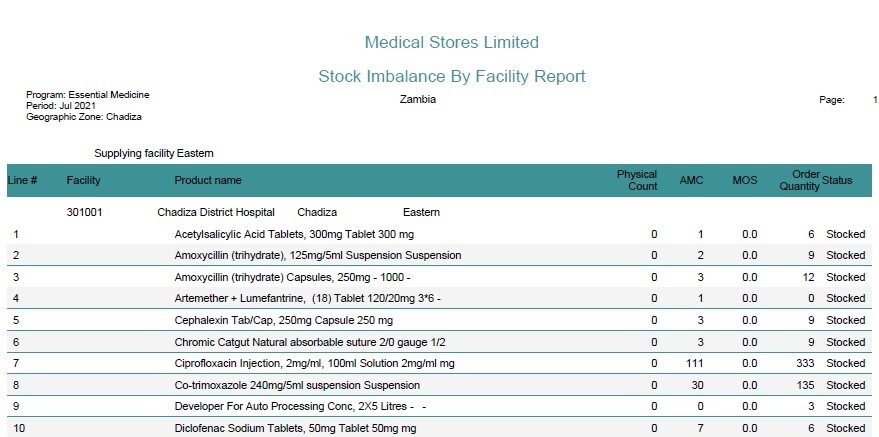
Faith Banda, the district pharmacist for Chadiza district in Zambia’s Eastern province
“I knew the electronic logistics management information system (eLMIS) would be useful, especially for remotely supervising the supply chain. But I didn’t realize how important it would become for ensuring the facilities in my district have good commodity availability,” says Faith Banda, the district pharmacist for Chadiza district in Zambia’s Eastern Province.
The eLMIS, like other technological improvements, was met with initial skepticism by end-users. Faith admits that the health logistics system that automated the supply chain seemed a little complex when she was first oriented to it.
“I’m constantly running reports through the eLMIS Central Edition (CE), even though I wasn’t sure I’d be able to interpret the information or make practical use of it in the beginning,” notes Faith. “What I enjoy best about the system is how it was made to suit what the Zambian logistics system already was; it simply made it more efficient and easier to obtain information.”
The stock imbalances report is one in eLMIS CE that Faith uses frequently. “I’ve learned a lot from studying stock imbalances in my area and province. You know, some facilities are located in large catchment areas while others aren’t, so the quantities of drugs they’d need would be different, but even that doesn’t tell the whole story. There are times when we find drugs that anyone would assume would move quickly at a large facility instead move slowly. I then contact these facilities to find out why said drug is moving slowly to know how that will affect future supply. The one decision I find myself making is product redistribution; I’m able to detect who has a surplus and redistribute accordingly by running stock imbalance reports.”

Medical Stores Limited Stock Imbalance By Facility Report
The five-year Electronic Supply Chain Management Information System (eSCMIS) project, funded by the United States Agency for International Development (USAID) and the U.S. President’s Emergency Plan for AIDS Relief, is responsible for implementing and managing the eLMIS. Through the USAID eSCMIS project, John Snow Health Zambia Limited (JSH) is transitioning the eLMIS into the next generation in collaboration with the Ministry of Health, Zambia Medicines & Medical Supplies Agency, and other key supply chain partners. JSH is the primary contractor on the USAID eSCMIS project, with subcontractors John Snow, Inc. and Churches Health Association of Zambia. The relationships formed to manage the eLMIS are major reasons it is so well suited to the Zambian health logistics system.
At the start of the system’s development, one of the strategic goals was to increase supply chain efficiency. This evolved into improved data culture among supply chain managers, who can now make data-driven decisions with easy access to information on the system. The USAID eSCMIS project provides user-friendly dashboards for analytics and alerts to allow for highly effective decisions.
“Because the district health office where I work is a pre-elimination site, we always have an adequate supply of malaria medications,” says Faith. “Using eLMIS CE reports, I’m always able to predict which facilities will want malaria medications before they contact us. An excellent example of a transfer I often make is to Chipata Central Hospital, a referral hospital that serves most of the Eastern province. It uses malaria medication at a quicker pace than we do, so I always transfer our excess there.”
Zambia’s public health policy environment is favorable to a next-generation eLMIS. The eLMIS CE supports all 2,600 health facilities, more than 1,000 of which are fully computerized and use the eLMIS Facility Edition. In addition, the USAID eSCMIS project continues to roll out eLMIS, with the ultimate goal of having it in place at 1,000 additional facilities across the country.
